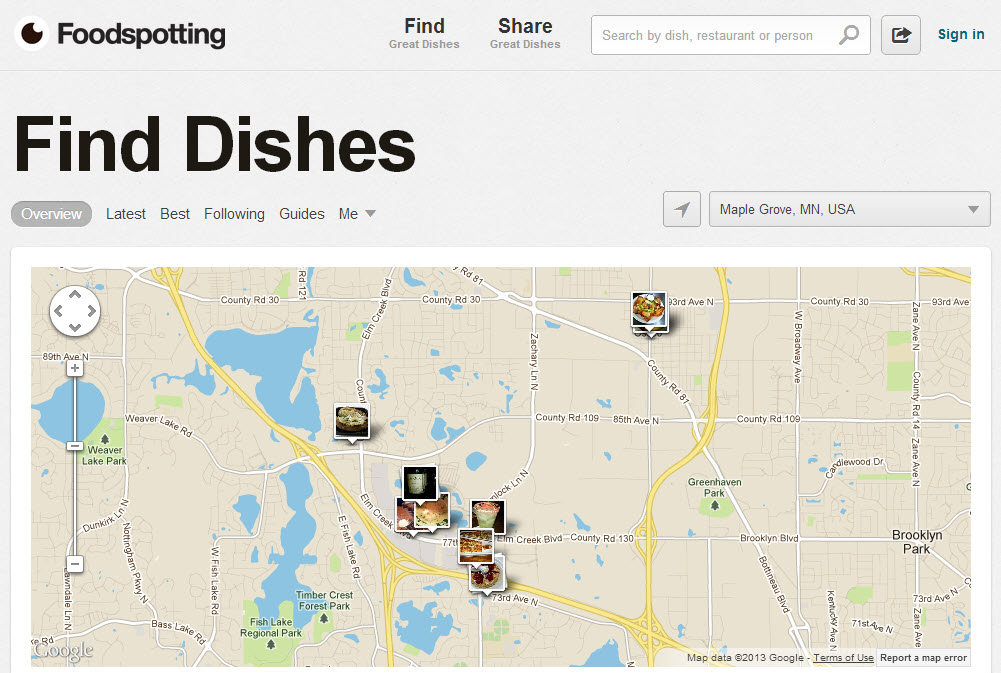Whenever I talked about location-aware technology to clients, Olive Garden was always my go-to website to demo how this feature works. Today, I was disappointed to find that this feature no longer has a prominent call-out on its home page, and is now buried on the “Find a Restaurant” page.
Boo.
Before I go too much further, let’s get a definition on the table. In a word, location-aware technology is not IP address tracking. It’s much more sophisticated and accurate than that. According to TechTarget, location-aware technology is “… determined by one of three methods: by GPS satellite tracking, by cellular tower triangulation, or by the device’s media access control address on a Wi-Fi network.”
It’s immediately obvious why location-aware technology is fundamental to most mobile browsing experiences, but I also like to encourage clients to think about it for their desktop sites, too.
As you can see below, Foodspotting automatically figured out which Minneapolis suburb I live in, and showed me photos of food from nearby restaurants. This is a smart application of the technology. I often conduct my restaurant research on my laptop before I leave the house – not while I’m already driving.
If you’re a multi-location retailer, restaurant or an international company, I think location-aware technology is a must-have for your website. Instead of asking users to select a country or ZIP code first, connect them to the right location off the bat and deliver targeted content and promotions.
Other creative uses:
- Showcasing where your product or service is in use (e.g., customers snap photos of their purchase and upload them to your website, Redbox locations).
- Connecting members of your community (e.g., cancer survivors, tax accountants)
- Promoting your city or special interest (e.g., local events, coffeeshops)
What’s your favorite location-aware website?



